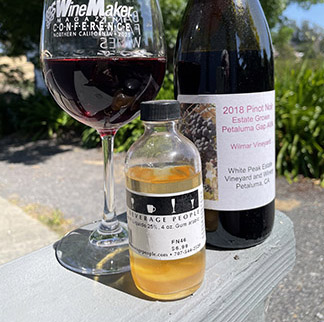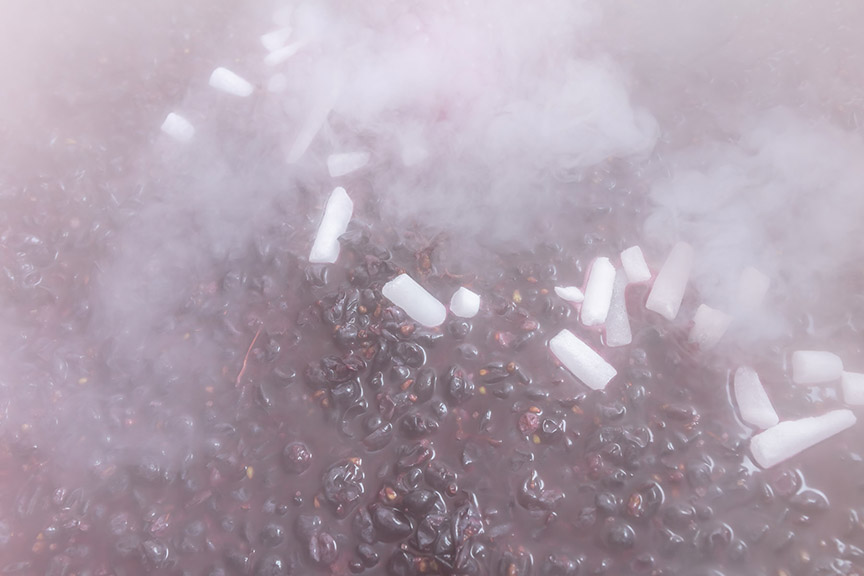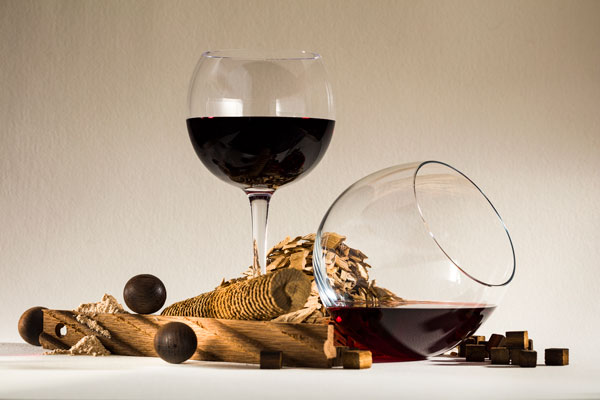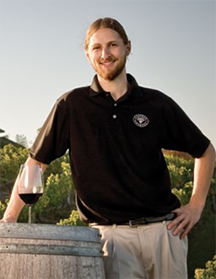10 Winemaking Techniques You Should Know
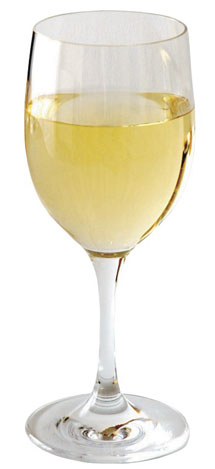
Q. What is the difference between good and superlative wines?
A. The WOW! factor. A good wine offers everything that the varietal or style is meant to provide. While it can provide great balance and drinking pleasure, perhaps it doesn’t quite “jump” out at you with oodles of fruit, aroma and flavor complexities, or a lingering finish.
A superlative wine, on the other hand, is packed with charming aromas and concentrated flavors that linger on and on, and provides more than simply great drinking pleasure; it excites the senses. A great wine makes the palate dance; it makes you close your eyes as you inhale the multitudes of subtle and harmonious aromas. It creates a lasting memory. It’s the type of wine that you will still talk about years from now.
Sure you can make good wines from true and tried recipes by simply following a set of instructions, but you’ll need to go beyond that to craft memorable wines. This is where you need to leap from the science into the art of winemaking.
Here are 10 proven winemaking techniques and practices you should know and implement if you want to make that leap.
- SEEK THE BEST FRUIT, JUICE OR CONCENTRATE It is often said that wine is made in the vineyard. Not literally, of course, but rather, to make great wine you must start with the best fruit possible. You can make great wine from great raw material, but you can’t make great wine from poor or average raw material. (And you can also make poor wine from great raw material.)So seek out the best fruit, juice or concentrate (kit). All too often, we settle for average raw material because we hurry into the excitement of making wine, but the quality will percolate its way into the final product. And you get what you pay for.Buy grapes from a reputable supplier to ensure you are getting the varietal you are paying for. Grapes must look healthy with no rot, mold or shriveled bunches. Large berries in small-berry varietals, such as Cabernet Sauvignon, Pinot Noir and Chardonnay, may point to a poor vintage with juice having a high proportion of water, which will dilute concentration of sugar, color (in reds), acidity, aromas and flavors. Small berries will yield less wine, but with richer concentration.
- RUN OFF JUICE Higher concentration of total dissolved solids in a juice, or concentrated juice kits, results in a richer wine. If you make red wine from grapes, here is an amazingly simple trick to increase concentration of color, aromas and flavors, and enhanced structure for more mouthfeel and body — run off some juice as you crush.Immediately after crushing the grapes, run off 10% or more of juice depending on your desired style of wine. A smaller volume of juice will then macerate with the same amount of grape skins, therefore increasing the concentration of phenolics extracted, i.e. color pigments, tannins and flavor compounds, from the skins.The free-run juice is simply vinified as white wine. Alternatively, you can let the juice macerate for up to 24 hours (depending on the desired depth of color) to make a rosé wine, and then run off the juice.
- FERMENT WITH DIFFERENT YEAST STRAINS Ah! One of the great secrets of winemaking . . . yeasts. Unfortunately, as amateurs, we do not seem to exploit the full potential of the many available yeast strains. All too often, little thought is put into yeast selection. At best, we choose a strain depending on the expected fermentation environmental conditions, such as temperature and expected alcohol yield.Yeast strains do, however, play a much more significant role beyond simply fermenting sugar into alcohol. No two strains are meant to yield the same results; different strains impart significantly different aromas and flavors. Some strains are better suited for specific varietals, and you may have come to develop a preference for a specific strain, but why not try fermenting separate batches of the same wine with different yeast strains?If your winemaking also involves barrel fermentation, try different strains in barrels in addition to fermentation in inert containers (i.e., glass carboys or stainless steel tanks). Following fermentation and throughout the maturation phase, taste and assess the wines separately and see how different each batch has turned out. Then, you can try blending different combinations of wines fermented using different strains until you have a wine that is greater than the sum of the parts. The results will surely surprise you.
- USE NUTRIENTS AND ENZYMES The use of specialized nutrients and enzymes isn’t a common practice in home winemaking, either because their use is misunderstood or they are dismissed as “harmful additives.” Quite the contrary, nutrients and enzymes are not harmful; they are actually beneficial.Yeast requires nutrients, particularly in musts from grapes and fresh juice where there may be a nutrient deficiency or imbalance. For example, high-sugar musts will require nutrients as yeast will be struggling in the presence of high sugar concentration.There are three types of nutrients: yeast rehydration nutrients that are added during yeast rehydration; complete yeast nutrients which provide a blend of complex nutrients, added to the must at yeast inoculation time; and, natural yeast derivative nutrients that can be added to the must or wine. Likewise, malolactic bacteria require nutrients for a successful MLF as the wine may not satisfy the bacteria’s high-nutrient needs. Enological enzymes are proteins that catalyze reactions involved in enhancing wine stability or improving overall quality. For example, pectic enzymes can degrade pectins to provide stability against cloudiness or to improve fining and filtering efficiencies, while macerating enzymes can be used to increase the rate of phenolic extraction for improved color and tannin stability, or to improve press yields.
- PERFORM DELESTAGE If you enjoy big, bold red wines, but would like to drink them earlier in their youth without the need for years of cellaring, delestage might be the answer for you if you make wine from grapes. Delestage is a fermentation and maceration technique, often used in crafting Pinot Noir, which gently extracts phenolic compounds by oxygenating the juice to produce a softer, less astringent wine exhibiting more fruit character. Author Richard Leahy explains this in his book Délestage Fermentation: From Bitter to Better Reds. Often referred to as the “rack-and-return” process, fermenting red wine is separated from the grape solids by racking and then returned to the fermenting vat to re-soak the solids, and then repeated daily. The result is a wine with a lower concentration of tannins and a higher concentration of esters that is much more approachable in its youth.During the racking phase of the process, the cap is allowed to slowly fall to the bottom of the vat while the wine is allowed to drain completely under the weight of the grape solids. Once the wine is completely racked, a portion of the grape seeds is removed to avoid imparting harsh tannins. Following racking, the grape solids are allowed to settle separately from the fermenting wine for 1–2 hours or more depending on the size of the fermenting vat. The fermenting wine is returned to the vat over the cap using a gentle, high-volume pump to completely soak the grape solids for maximum color and flavor extraction while minimizing extraction of harsh phenols.This process is repeated daily until the end of fermentation. As fermentation progresses, more seeds are released from the grapes, a portion of which can be removed during each racking operation.
Refer to “Do the Delestage” in the June-July 2003 issue of WineMaker for detailed instructions on implementing delestage in the home winery.
- ADD CHARACTER TO WINE The use of oak barrels is as old as winemaking. Aside from their ideal properties for storing and shipping wine in ancient times, the true benefit of barrels is that they add character, specifically, aromas and flavors that complement wine perfectly like no other type of wood or vessel. And the controlled micro-oxidation, through the barrel wood and staves adds further complexity. The benefits of micro-oxidation can only be achieved using barrels, however, there are several oaking solutions to impart oak aromas and flavors to replicate that style of wine you like so much that does not require a hefty investment in barrels. You can choose from oak chips, beans and segments for oaking in as little as one week, as well as staves which are ideal because they impart oak more slowly as less end grain is exposed on the wood.So use oak if you want to nuance that delicate Pinot Grigio with hints of oak and vanillin and to add more character, or if you like rich and full-bodied Chardonnays and Bordeaux-style blends, or delicate Pinot Noirs. But be careful not to over-oak; you don’t want the oak to mask other aromas and flavors.And for those of you living in northeastern US, around the Finger Lakes area, and the Niagara Region of Canada, and that have to contend with the dreaded Multi-colored Asian Lady Beetle (MALB) taint responsible for imparting asparagus, rancid peanut and bell pepper aromas, oaking has been shown to mask such aromas quite successfully depending on the extent of taint. Refer to “Barrels” in the April-May 2006 issue of WineMaker for more information on the use of oak.
- CARRY OUT MLF Malolactic fermentation (MLF) is the partial or complete transformation of naturally-occurring, sharp-tasting malic acid (think green apples) found in juice and wine into the softer lactic acid (think milk-based products) induced by lactic acid bacteria. As malic acid is stronger and is converted in roughly equal proportions of lactic acid and carbon dioxide gas (CO2), there is a corresponding decrease in total acidity (TA), making MLF ideal as an acid-reduction technique, particularly in reds. In whites, it is also responsible for the common buttery/nutty flavor found in malolactic-fermented Chardonnays. MLF is, however, not recommended in all wines. Most reds will benefit while only certain whites, such as Chardonnay or highly-acidic varieties will benefit. MLF can excessively reduce acidity in whites or impart non-complementary flavors that make the wine flat and unpalatable, particularly in aromatic whites, such as Riesling. Concentrate wine kits are processed to avoid acidity adjustment and MLF altogether, and so, it is not desired nor recommended in such wines.A dry- or liquid-format malolactic culture is recommended to initiate MLF instead of trying to rely on unpredictable and potentially damaging indigenous bacteria. For some added complexity, carry out the MLF in barrels in conjunction with lees stirring.
- STIR THE LEES If you want to add aroma and flavor complexity to a refreshing, light-bodied Sauvignon Blanc, or for increased richness in a Burgundian-style or full-bodied California Chardonnay, try stirring the lees, which are the dead yeast cells that form at the bottom of carboys or barrels during fermentation.Lees stirring, known as bâtonnage in Burgundy, refers to the practice of stirring the dead yeast cells back into suspension during the maturation period, hence why it is often referred to as sur-lie aging, French for “on the lees”. It is most often practiced in white winemaking.The stirring is accomplished using a special cane or stirring rod according to a stirring schedule determined by the winemaker based on desired style, for example, once daily starting at the end of both fermentations, and then progressively reduced to once a week for a maximum total duration of 12 months. A word of caution though, only fine lees are beneficial; gross lees are rich in spoilage organism nutrients and contain a myriad of other heavy solids, such as pulp and grape skin fragments that may contain sulfur, from vineyard spraying, or sulfur dioxide (SO2) from sulfite additions, all of which can have a negative impact on wine quality. Extended contact with gross lees can cause a (chemical) reduction of sulfur-containing compounds, which can lead to highly undesirable flavors such as a rotten-egg smell. To avoid such spoilage, rack wine off its voluminous gross lees early, i.e., right after the vigorous phase of alcoholic fermentation.Refer to “Stirring the Lees” in the August-September 2006 issue of WineMaker for more information.
- TASTE, TASTE, TASTE AND BLEND The need to taste and taste again extensively cannot be over-emphasized. You need to be patient and nurture wine from fermentation to bottling. And throughout this aging and maturation period, you should taste the wine regularly to assess its evolution and also as a preventative measure against any spoilage that may be setting in. This is particularly true of wines that are fermented or aged in barrels because you need to control the amount of tannins and oak aromas and flavors extracted, and again, to prevent any spoilage as the risk increases now that the barrel will have some headspace as the wine evaporates.When tasting wine, take a sample from each and every carboy and barrel; don’t assume that wine is developing similarly in two barrels. It is particularly important to taste wine after key operations, such as fermentation, MLF and fining since these will invariably alter TA, pH, structure and body. Perform key measurements such as TA, pH and free SO2 at a minimum to try and correlate your olfactory and gustatory observations with the analytical data.As soon as you detect something wrong with the wine or you feel some adjustments are required, take immediate corrective action by first performing bench trials on a small sample before addressing the whole batch.Once you have tasted and “corrected” all batches, decide if you want to blend any batches back together or if you want to try blending different varietals. Many of the great wines of the world are blends, so don’t limit yourself to making strictly varietals. Try various blends of different wines in various percentages of each until you get something you like. Keep in mind that the over-arching principle is to always maintain balance between perceived sweetness, acidity, alcohol and tannins in the case of reds.Refer to both “Balance in Wine” and “Achieving Balance” in the February-March 2005 issue of WineMaker for more information.
- STABILIZE WINES Jancis Robinson explains in The Oxford Companion to Wine (Third Edition, 2006) that stabilization is the winemaking practice of safeguarding juice and wine from the time the must is handled in preparation for vinification, through vinification and aging, to bottling and until consumed, and includes two sorts of operations: one to counter physical and chemical changes and another to counter microbiological changes.Specific processes to counter physical and chemical changes include racking, fining (clarification), filtration, chill-proofing and heat stabilization, while processes to counter microbiological changes include adding preservatives and stabilizing agents and membrane filtration.Before undertaking any form of stabilization, you need to understand the wine’s chemistry, style and history to make informed decisions. In winemaking from concentrates, this is simple as the manufacturer has done extensive testing and will typically recommend fining or filtration and the addition of sulfite and possibly potassium sorbate. In general, this is not sufficient when making wine from grapes or fresh juice because these would not have been treated against potential instabilities, such as against cold and hot temperatures. Here are some guidelines.All wines should be protected with a nominal free SO2 level of approximately 35 mg/L, adjusted up or down based on pH. The higher the pH, the less effective SO2 is, hence more sulfite is required. Use the Sulfite Calculator at www.winemakermag.com to guide your sulfite additions.Early-drinking reds and whites should be fined or filtered, perhaps both if a wine is to be bottled and drunk soon.
A wine that has not been cold stabilized will throw tartrate crystals — potassium acid tartrate, the potassium salt of tartaric acid — when it is subjected to cold temperatures. Similarly, a wine with excessive protein concentration and has not been heat stabilized will become cloudy if subjected to hot temperatures. Therefore, you need to test all wines for cold and heat (protein) stability and treat accordingly.
To test for cold stability, place a sample bottle of wine in a cold refrigerator or freezer at a temperature of as low as -4° C (25° F) for three days. At the end of the test period, hold up the bottle against a bright light, invert it and look for tartrate crystals that fall down. If there are no crystals, the wine is considered cold stable and requires no further processing against tartrates. If the test is positive, then the wine must be chill-proofed by placing the wine in cold storage for a couple of weeks or treated with metatartaric acid.
To test for heat stability, heat a wine sample at 80° C (176° F) for 10 minutes and then place it in a freezer for several hours. Retrieve the sample and let it warm up to room temperature; if it shows any sign of haze or precipitation, then the wine is not protein or heat stable and requires a bentonite treatment.
Refer to “Hot and Cold Hazards” in the October-November 2007 issue of WineMaker for more information on cold and heat stabilization.
For wines that will have any appreciable amount of residual sugar, for example over 5.0 g/L (0.5%), you will need to add potassium sorbate to inhibit renewed fermentation in the bottle. For added peace of mind, if the wine is to be cellared for an extended period of time or if the wine has undergone MLF and the use of sorbate is not recommended, membrane filtration is the solution.
Membrane filtration is a specialized type of filtration used to achieve microbial stabilization to safeguard wine against microbiological changes or spoilage due to unwanted or undesirable yeasts and bacteria that may start feeding on residual sugar, malic acid or other nutrients.
Refer to “Should I Membrane Filter My Wine” and “Microbial Stabilization” in the August-September 2007 issue of WineMaker for more information.
If membrane filtration is beyond your means or abilities, you can use lysosyme — a specialized enzyme effective in suppressing spoilage bacteria after MLF and achieving microbial stability, particularly in high-pH wines where more sulfite is required to guard against spoilage.



